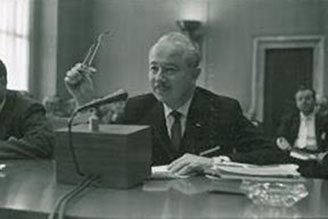The Company

Chalk vehemently disagreed with the union’s demands to eliminate carrying change boxes, primarily because the current contract between the company and the union could not be altered. Furthermore, the current situation had nothing to do with contract negotiations, and the drivers caused the stoppage by not reporting to work with proper equipment. He argued that “elimination of route structures and route scheduling” would be a preferable alternative to drivers carrying no cash. In a full-page ad in the newspaper he published, the Examiner, Chalk wrote that the union and local and federal officials ignored the crime problem. According to Chalk, the union pushed to reopen contract negotiations, even though the existing contract would not expire until 1969. In addition, the union expected the company to operate without collecting fares, a “transit revolution” according to Chalk, in which drivers did not carry change for fares. Chalk claimed that the federal government, specifically the Department of Housing and Urban Development, ignored the company’s pleas prior to the April 1968 riots for funding for two-way radios.
The much-maligned D.C. Transit and Chalk received little in the way of favorable press coverage, especially in the pages of the Washington Post. Through the 1960s, D.C. Transit struggled to provide a suitable transit operation as private transit collapsed as a result of various government policies and ownership mishaps. Profits began to disappear by the mid-1960s despite continued subsidies and fare increases. As the population doubled from 1950 to 1970, the mileage of the bus systems decreased then rose again, but never to pre-1950s levels. Ridership declined rapidly from 1950 until 1955, then leveled off before dropping again in 1965. This 1965 decline occurred because buses continued to serve the areas where the working-age population had declined, resulting in a captive ridership of young, poor, and elderly, while the new areas of growth where commuters often originated received less service. As riders, particularly commuters, abandoned buses and drove cars, bus travel became even more time consuming in the automobile traffic, and rising crime did not help alleviate the situation.